With the recent six-day visit of South Korean President Yoon Suk Yeol to the United States and the December release of South Korea’s Indo-Pacific strategy, Seoul’s global ambitions and its burgeoning role have been in the spotlight.
Among these ambitions, South Korea now brands itself as a “Global Pivotal State that actively seeks out an agenda for cooperation and shapes discussions in the region and the wider world.” Its expanded vision is vast; its Indo-Pacific strategy speaks of reaching beyond Northeast Asia, Southeast Asia, India, and the United States to the Pacific Islands, the African Coast of the Indian Ocean, Europe, and Latin America. What’s less examined, however, is how these bold moves have been interpreted by the Indo-Pacific states. How might Indonesia and Australia view South Korea’s intentions to play a bigger role in the Indo-Pacific? For Jakarta and Canberra, who have divergent visions of the regional order, how does the new strategy fit into their respective approaches — and how do they fit into Seoul’s?
Good news for Indonesia and Southeast Asia?
As an avid promoter of the Indo-Pacific construct and a nonaligned state, there is much for Indonesia to like in South Korea’s strategy. For one, the strategy’s non-provocative language and emphasis on inclusiveness echoes Indonesian President Joko Widodo’s desire for an Indo-Pacific built upon “open, transparent, and inclusive manners based on habit of dialogue.” It also “neither targets nor excludes any specific nation,” and recognizes China as “a key partner for achieving prosperity and peace” with whom Seoul will “nurture a sounder and more mature relationship.” This constructive sentiment bodes well for Jakarta, which vehemently rejects any hint of an Indo-Pacific framework becoming a containment strategy against Beijing.
As the de facto leader of Southeast Asia, Indonesia is particularly encouraged by South Korea’s support of the centrality of the Association of Southeast Asian Nations (ASEAN) and the ASEAN Outlook on the Indo-Pacific (AOIP). For Jakarta, ASEAN is not only a critical pillar of the Indo-Pacific architecture but remains the “cornerstone” of its foreign policy. Considering South Korea named Southeast Asia and ASEAN second after its North Pacific neighbors in its list of key partners, Southeast Asian states must capitalize on Seoul’s intention to strengthen its relations with both the grouping and individual states. Seoul has taken concrete steps in this direction, announcing the Korea-ASEAN Solidarity Initiative, aimed at improving economic ties, and agreeing to deepen cooperation with ASEAN in the AOIP’s four priority areas of maritime, connectivity, economic, and sustainable development cooperation.
That said, the ambitious scope of South Korea’s Indo-Pacific strategy threatens Seoul’s ability to sustain interest and investment in Southeast Asia. Seoul has made previous attempts to deepen its diplomacy with the region via its New Southern Policy, a 2017 strategy that was refreshed in 2020 and is focused on promoting development and economic cooperation. But now, Southeast Asia and ASEAN will be treated as a subset of the Indo-Pacific, in which Seoul could spread itself dangerously thin.
From Indonesia’s perspective, if South Korea were serious about building a “free, peaceful, and prosperous” Indo-Pacific and supporting ASEAN, a significant step would be to strengthen ASEAN centrality. The grouping is currently facing an existential crisis due to the situation in Myanmar and the glaring lack of progress on ASEAN’s Five-Point Consensus, which call for, among other things, “an immediate cessation of violence.” Unlike Indonesia, non-ASEAN members like South Korea can take immediate and tangible steps like supporting diplomatic measures in the United Nations that strengthen the National Unity Government in Myanmar or weaken the junta’s ability to wield violence on its people. As the current ASEAN chair, Jakarta is well-placed to explore this with Seoul.
Seoul’s Indo-Pacific strategy also reiterates the Yoon administration’s desire to work with Southeast Asian partners via the Indo-Pacific Economic Framework (IPEF) so that it “evolves into an effective economic forum.” With Indonesia, South Korea, and six other Southeast Asian states as members of IPEF, there is potential to deepen intra-ASEAN economic ties while working toward broader regional goals. With 11 mentions of “supply chains,” the strategy provides ample impetus to pursue closer ties. Indeed South Korea’s growing investment in Indonesia’s nickel supplies could provide both the blueprint and lessons for expanding such cooperation with the region.
Potential gains for Australia and the Pacific Islands
While Southeast Asia and ASEAN constitute important elements of Australia’s own Indo-Pacific vision, key for Canberra is the strategy’s strengthening of the South Korea-U.S. alliance at a time of heightened strategic anxiety about Taiwan’s future. The intent to deepen Australia-U.S.-South Korea cooperation in areas like supply chains, climate change, and allied security cooperation with Japan will provide further dividends for Australia through greater policy alignment, socialization between officials, and deepening of interoperability.
The strategy also expressly declares its desire to “gradually expand nodes of cooperation with the Quadrilateral Security Dialogue (Quad),” first in areas such as infectious disease, climate change, and emerging technologies. The addition of South Korea’s financial and technical support in these areas will certainly be advantageous to Australia’s strategic interests while deepening a “security network” between Seoul, Canberra, Washington, New Delhi, and Tokyo.
Of specific interest to Canberra is the strategy’s intent to increase engagement with the Pacific Islands, a region where Australia considers itself to be part of “a strong and unified Pacific family.” Seoul’s planned investment in climate change, health, oceans and fisheries, and renewable energy dovetails with Australia’s foreign policy priorities in the Pacific Islands.
A cynical view of South Korea’s newfound enthusiasm for the Pacific Islands sees it as an extension of increasing U.S.-China strategic competition in the region. Pacific Island leaders are cognizant of these dynamics but are neither interested in taking sides nor being dictated to by stronger powers. As Solomon Islands Prime Minister Manasseh Sogavare put it, his country is “friends to all, enemy to none.” As such, whether nudged by the United States or largely of its own accord, South Korea’s decision to turn attention and resources would be welcomed by Australia (and New Zealand). In particular, a constructive dialogue guided by the region’s leaders and communities between all Pacific Island states, Australia, New Zealand, and South Korea (possibly even other Indo-Pacific players) would be immensely helpful in narrowing priority tasks and coordinating resources.
Overall, South Korea’s Indo-Pacific strategy is bold and ambitious, with good intentions. Seoul clearly intends to work with and support partners from Oceania to Europe and seemingly everywhere in between. Time will tell whether the inherent and admirable optimism in South Korea’s Indo-Pacific vision withstands the test of reality, and whether the strategy survives any change of government. Its durability will be critical for regional partners like Indonesia and Australia. Until then, South Korea will be striving to help create order in the chaos of the Indo-Pacific, being everything, everywhere, all at once.
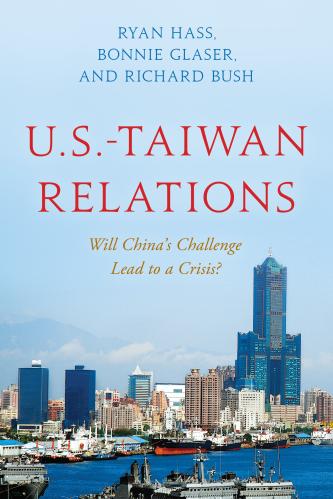
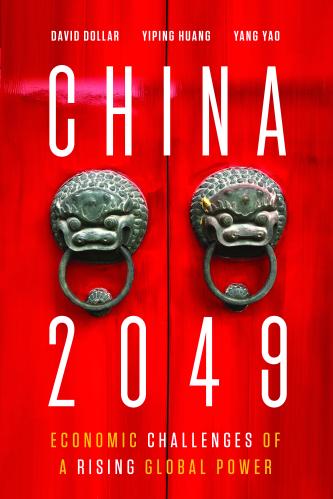
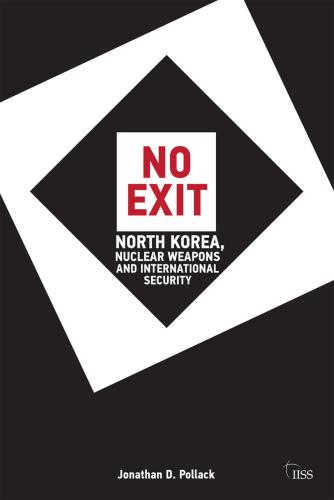
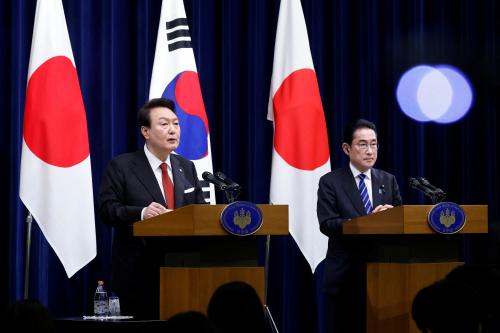
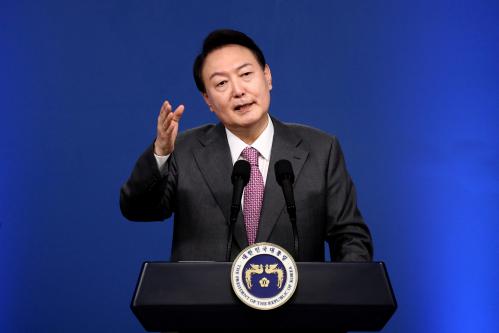
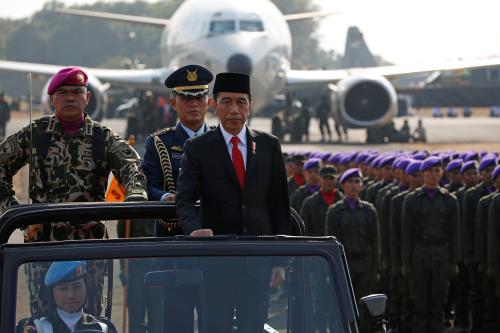


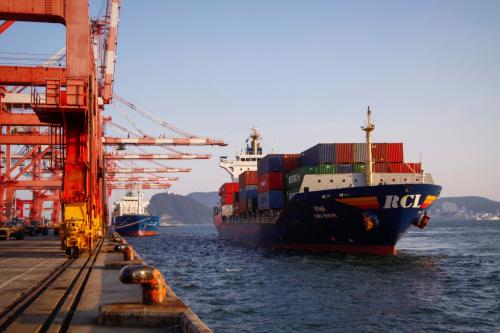
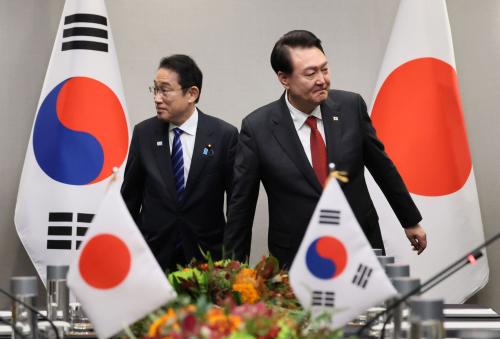
Commentary
How Indonesia and Australia view South Korea’s “everything, everywhere, all at once” Indo-Pacific strategy
May 12, 2023